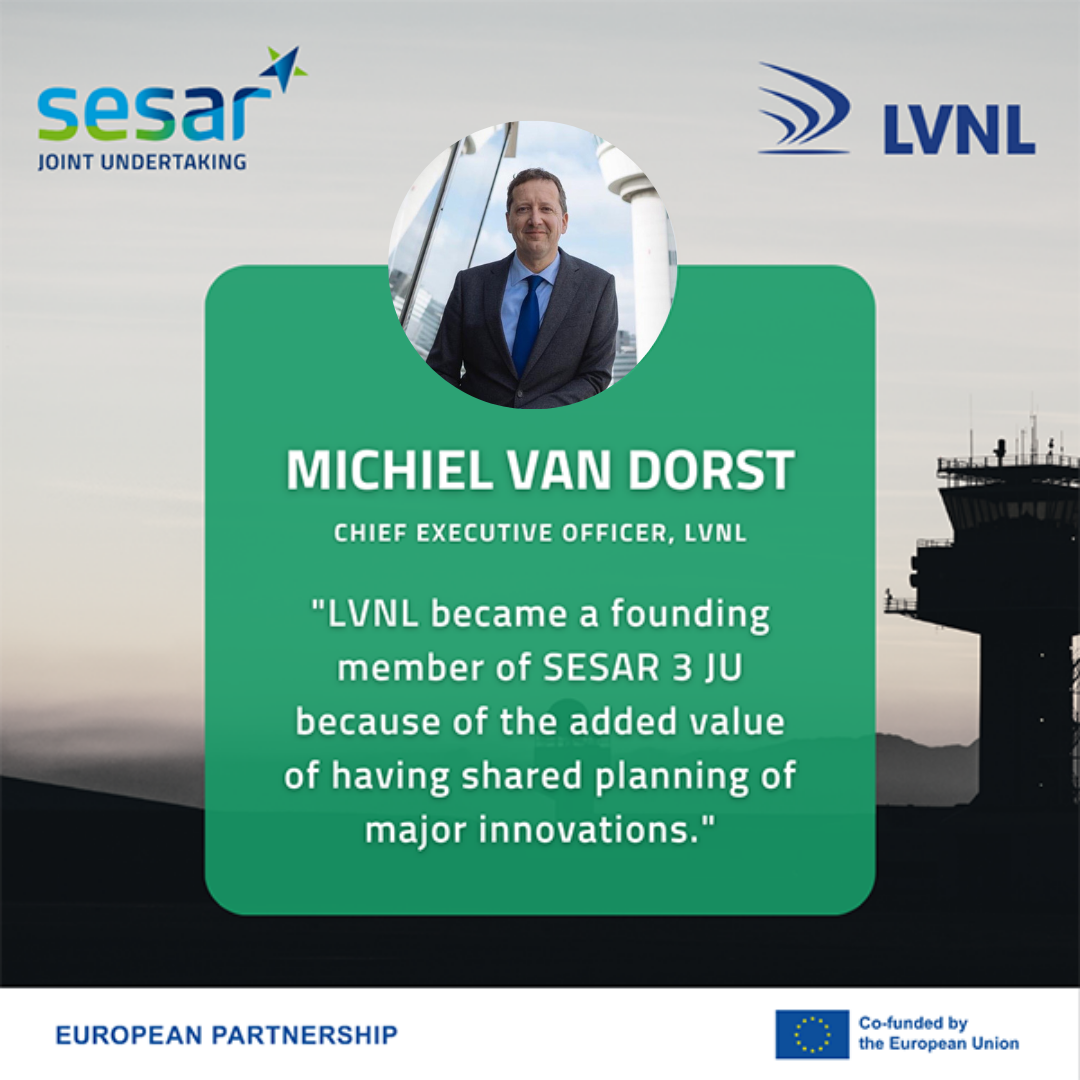LVNL

Luchtverkeersleiding Nederland focuses primarily on the provision of air traffic services for civil aviation. Other tasks include modernisation and management of technological systems, providing aeronautical information and air traffic control training and providing aeronautical maps and publications.
Michiel van Dorst, Chief Executive Officer, LVNL
What is the added value of being a member of the SESAR 3 JU?
In my view, only a coordinated collaboration between Air Navigation Service Providers, technology providers and aviation partners helps us to push innovations to make our operation more sustainable and efficient towards the future. Air Traffic Control the Netherlands (LVNL) became a founding member of SESAR 3 JU because of the added value of having shared planning of major innovations. Also, executing a joint development with the aim of demonstrating solutions for further improvements in our industry is important for us. By working closely together, we obtain more knowledge and know-how. Partners learn from each other, and we contribute by sharing our knowledge as ATM-expert with other SESAR 3 JU members. In doing so, we obtain better solutions and promote the deployment of innovative concepts in the Netherlands as well as in the rest of Europe.
Why is air traffic management and its digital transformation important to LVNL?
The Netherlands is a relatively small country with Schiphol Airport being one of the biggest hubs in Europe, resulting in a congested airspace with challenging day to day operation. A good fit into the European ATC network and close cooperation in traffic handling with other ANSPs are of crucial importance to run a smooth operation. Sharing information between aviation partners will become more and more important and we aim to do this in the most modern, standardised, and flexible way. The joint digital transformation under SESAR 3 JU helps us achieve this ambition.
What are LVNL’s top three innovation priorities?
LVNL is working hard on the realisation of our new air traffic control system iCAS, a modern platform that will be the enabler for future innovations. iCAS makes it possible to develop the concept of trajectory-based operations (TBO), allowing aircraft to fly their optimal fuel-efficient four-dimensional (4D) trajectory. TBO will be even more effective when it will be combined with solutions such as continuous descent and climb. This will result in reducing aircraft noise and reducing emissions, both pressing matters that are becoming more significant for airports located in densely urbanised regions, like in the case of Schiphol Airport. Actively sharing information in a secure way between partners, including being active in the U-space sector, is needed to boost these innovations.’
In which flagships of the Digital European Sky programme is LVNL particularly interested in getting involved, and why?
We are particularly interested in three flagships that complement LVNL’s innovation priorities. The first being the flagship ‘Air–ground integration and autonomy’. Especially the research and innovation that focuses on the integrated 4D trajectory automation in support of trajectory-based operations has our attention. Secondly, we are interested in the flagship ‘Connected and automated air traffic management’, like airport automation with runway and surface movement assistance for more predictable ground operations and runway use optimisation. The flagship Aviation ‘Green Deal’ also has our special interest, like optimising green trajectories, environmentally optimised climb and descent operations and accelerating decarbonisation through incentives targeted on both an operational and business level. Important innovations that will help to make the aviation industry more sustainable.

